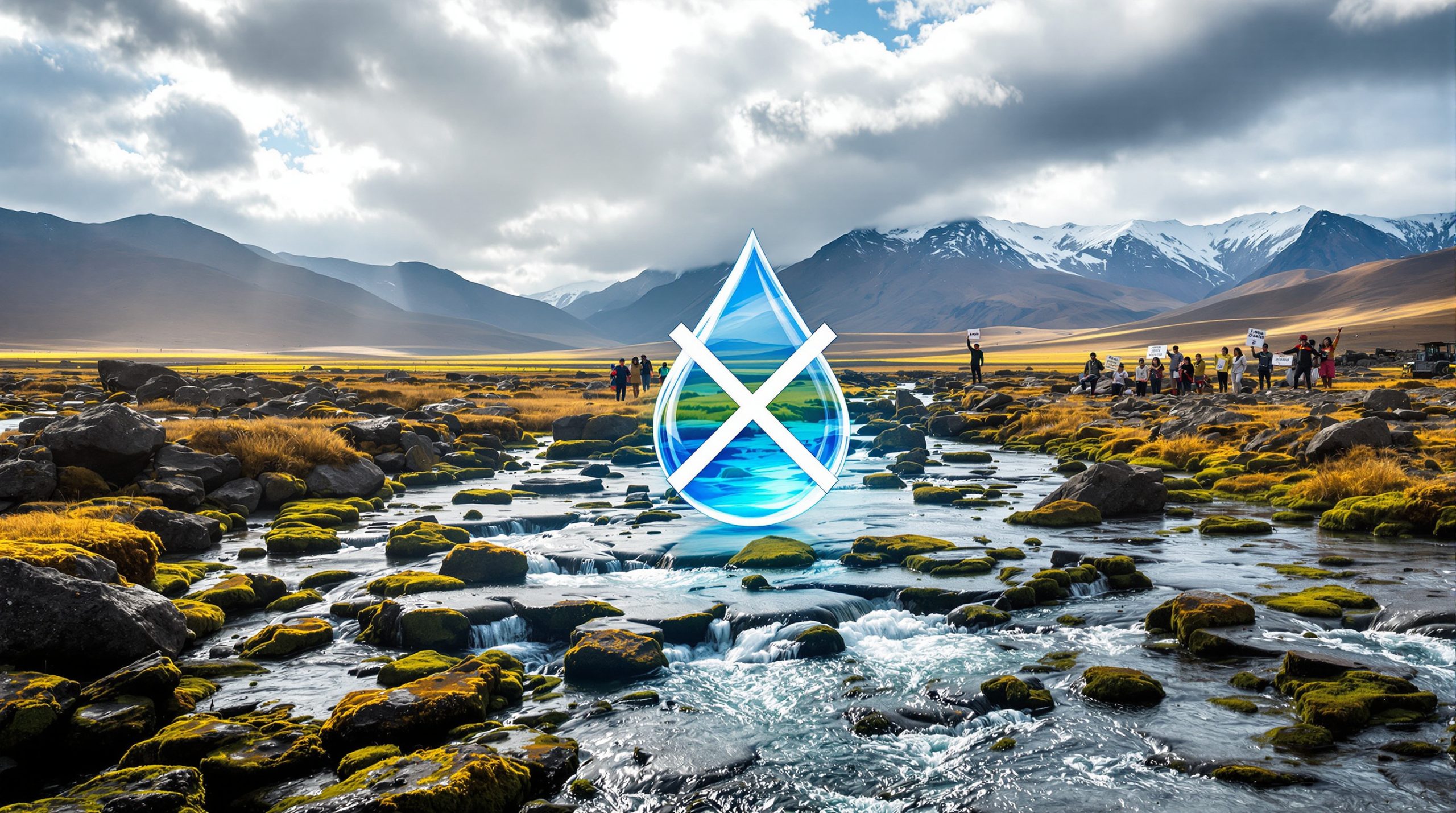Strategic Rare Earth Supply Partnership: Brazilian Feedstock Agreement Reshapes Global Market
Brazil is strategically positioning itself as a key alternative supplier in the global rare earth elements (REE) market through significant feedstock agreements and infrastructure development. The country's rich mineral resources, particularly in heavy rare earth elements like dysprosium and terbium, are attracting international partnerships aimed at reducing dependence on China-dominated supply chains.
Brazil's Emerging Role in Rare Earth Production
Brazil possesses abundant rare earth deposits across multiple states, making it geologically well-positioned to become a major player in the global supply chain. The country's strategic location offers advantages for serving Western markets, while its established petrochemical infrastructure provides a foundation that can be adapted for REE processing operations.
The Brazilian government has demonstrated increasing support for critical mineral development, recognizing these resources as strategically important for economic growth and international partnerships. This governmental backing, combined with growing international investment interest, creates favorable conditions for Brazil's rare earth sector to expand significantly in the coming years.
What Does the Brazilian Rare Earths-Carester Agreement Include?
The recently announced partnership between Australian-listed Brazilian Rare Earths and French processor Carester SAS represents a significant development in Western efforts to secure non-Chinese rare earth supplies. According to Reuters reporting from October 2025, this agreement comes at a strategic time when Western countries are actively seeking alternatives to China-dominated supply chains.
Key Terms of the 10-Year Supply Agreement
The agreement includes supply of heavy rare earth feedstocks over an initial ten-year period, establishing a long-term partnership between the companies. Brazilian Rare Earths will provide a maximum of 150 tonnes per annum of contained dysprosium and terbium, focusing on these particularly valuable and critical elements.
Carester will provide engineering and technical services for Brazilian Rare Earths' planned separation plant, adding significant expertise to the project. The plant will be integrated with the existing Camaçari Petrochemical Complex in Brazil's Bahia state, leveraging established infrastructure.
The partnership specifically targets high-value, critical rare earth elements that face supply constraints but have growing demand in high-technology applications.
Strategic Significance of the Partnership
This collaboration creates a vertically integrated supply chain from mine to separated rare earths, reducing dependency on Chinese processing capabilities. The agreement leverages Carester's technical expertise in rare earth separation, which is particularly valuable given the complexity of separating and processing these elements.
This partnership helps establish Brazil as a key supplier of heavy rare earths outside China, diversifying global supply options. By addressing the critical shortage of dysprosium and terbium needed for high-performance magnets, the agreement supports industries ranging from electric vehicles and robotics to national defense applications.
The partnership aligns with broader Western efforts to diversify critical minerals energy security away from current concentrations in China.
Why Are Dysprosium and Terbium Considered Strategic Minerals?
Dysprosium and terbium are heavy rare earth elements with exceptional properties that make them indispensable in various high-technology applications. Their limited global availability and concentration of production in China have elevated their strategic importance for industries and governments worldwide.
Critical Applications of Targeted Rare Earths
| Element | Key Applications | Strategic Importance |
|---|---|---|
| Dysprosium | High-temperature permanent magnets, nuclear reactors, electric vehicles | Enhances magnet performance at high temperatures |
| Terbium | Phosphors, permanent magnets, solid-state devices | Critical for high-efficiency lighting and precision electronics |
These elements are essential components in technologies considered vital to both economic competitiveness and national security. As Reuters noted in October 2025, these minerals are "essential for the production of high-performance permanent magnets" and remain "largely under China's control."
Supply-Demand Dynamics
The global market for dysprosium is relatively small but critically important, with demand growing as electric vehicle production increases worldwide. Similarly, terbium's market is limited in volume but essential for specific high-technology applications where substitutes are either non-existent or significantly inferior.
China's dominance in heavy rare earth production—controlling over 85% of global output—creates supply vulnerabilities for Western manufacturers. Demand for both elements is projected to grow substantially through 2030, driven by clean energy technologies, advanced electronics, and defense applications.
Price volatility has been a persistent challenge, influenced by supply constraints, export restrictions, and geopolitical factors that affect market access and availability.
How Does Carester's Involvement Strengthen the Partnership?
Carester brings significant technical expertise and downstream processing capacity to the partnership, enhancing the viability of Brazilian Rare Earths' operations. This collaboration provides technical depth that might otherwise take years to develop independently.
Carester's Strategic Advantages
Carester possesses specialized expertise in rare earth separation technology, a complex process that requires significant technical knowledge. The company is currently building a rare earth separation and recycling plant with substantial financial backing, demonstrating its commitment to developing this capacity.
According to Reuters reporting from October 2025, Carester's plant has received backing of over €216 million ($251.25 million) from the French government and Japanese entities, indicating high confidence in their technical capabilities. This level of investment suggests established relationships with customers in high-tech manufacturing who depend on reliable rare earth supplies.
The company's experience in processing various rare earth feedstocks will be valuable for optimizing production from Brazilian resources.
Technical Support for Brazilian Operations
Carester will provide engineering services for separation plant design, bringing specialized knowledge to the project development process. Their expertise will help optimize processes for heavy rare earth extraction, maximizing recovery and purity of the targeted elements.
The partnership will establish quality control protocols for meeting international standards required by high-technology manufacturers. Knowledge transfer regarding sustainable processing methods will benefit the Brazilian operation's long-term development.
Integration with existing petrochemical infrastructure at Camaçari will be facilitated by Carester's technical expertise in chemical processing.
What Impact Will This Agreement Have on Global Rare Earth Supply Chains?
The partnership represents a significant step toward diversifying global rare earth supply chains away from Chinese dominance. By establishing new production capacity for critical elements, it contributes to greater supply security for Western industries.
Reshaping Global Supply Dynamics
The agreement's provision of 150 tonnes per annum of dysprosium and terbium represents a meaningful addition to non-Chinese supply, potentially serving approximately 10% of Western demand for these elements. This creates a new supply node outside China's control, reducing the risk of supply disruptions or trade restrictions affecting critical industries.
The partnership supports manufacturing of high-performance magnets in Europe by ensuring reliable access to essential inputs. This reduces supply chain vulnerability for defense and clean energy technologies that depend on these specialized magnets.
The agreement establishes a precedent for future rare earth metal talks in Brazil, potentially encouraging additional investment in the country's rare earth resources.
Economic and Strategic Benefits
The development will create jobs in Brazil's mining and processing sectors, contributing to economic development in resource-rich regions. Technology transfer will help develop local expertise in advanced mineral processing, building Brazil's capacity in high-value industries.
Diversified supply reduces geopolitical leverage for dominant suppliers, enhancing economic security for importing nations. Price stabilization through more diverse supply options benefits both producers and consumers of rare earth products.
Enhanced supply security for critical technologies supports innovation and deployment of advanced technologies in defense, renewable energy, and electronics sectors.
How Does Brazil's Camaçari Petrochemical Complex Support Rare Earth Processing?
The selection of the Camaçari Petrochemical Complex as the location for Brazilian Rare Earths' separation plant offers significant advantages. This established industrial zone provides infrastructure and services that would be costly and time-consuming to develop at a greenfield site.
Infrastructure Advantages of Camaçari
The complex offers existing chemical processing infrastructure that can be adapted for rare earth processing, including utilities, storage, and handling facilities. Access to necessary reagents and utilities is readily available through established supply networks serving the petrochemical industry.
Well-developed transportation networks connect the complex to ports and international shipping routes, facilitating export of finished products. The area has a skilled workforce with chemical processing experience, reducing training requirements for specialized operations.
Environmental management systems already in place at the complex can be leveraged for rare earth processing operations, which often involve managing potentially hazardous materials.
Operational Efficiencies
Utilizing existing infrastructure significantly reduces capital expenditure compared to building standalone facilities, improving project economics. The streamlined permitting process in an established industrial zone accelerates development timelines compared to undeveloped locations.
Access to port facilities for international shipping reduces logistics costs and simplifies supply chain management. Integrated waste management systems provide efficient handling of processing byproducts according to regulatory requirements.
The potential for industrial symbiosis with other operations at the complex may offer opportunities for shared resources, reduced costs, or utilization of byproducts.
What Are the Environmental Considerations for Rare Earth Processing in Brazil?
Rare earth processing presents environmental challenges that must be addressed to ensure sustainable operations. The industry has historically faced scrutiny regarding environmental impacts, making responsible management practices essential for new developments.
Environmental Management Strategies
Successful operations will implement closed-loop processing systems to minimize waste and reduce environmental footprint. Water recycling and treatment protocols are critical given the water-intensive nature of rare earth processing.
Tailings management and waste minimization strategies must address the potential for radioactive elements often associated with rare earth deposits. Energy efficiency measures can reduce the carbon footprint of processing operations, which typically have high energy requirements.
Compliance with Brazilian and international environmental standards will be essential for maintaining operational licenses and accessing international markets.
Sustainability Initiatives
Development of environmentally friendly extraction methods represents an opportunity for innovation in the sector. Rehabilitation of mining areas after extraction must be planned from the project outset to ensure restoration of disturbed lands.
Monitoring of air and water quality around processing facilities provides data for continuous improvement and regulatory compliance. Community engagement and transparency in environmental reporting build trust with local stakeholders and support social license to operate.
Research into more sustainable processing technologies offers potential for reducing environmental impacts while improving operational efficiency.
How Does This Agreement Fit Into Global Efforts to Reduce Dependence on Chinese Rare Earths?
The Brazilian Rare Earths-Carester partnership is part of a broader international effort to develop alternative rare earth supply chains. As Reuters reported in October 2025, the agreement "comes at a time when western countries seek to rely less on the China-dominated supply chain."
Global Context of Rare Earth Diversification
Various policy initiatives worldwide are supporting rare earth supply diversification, including incentives for domestic production and processing. The European CRM facility promotes supply diversification for materials designated as critical for economic and strategic purposes.
Japanese investments in rare earth projects outside China reflect long-standing concerns about supply security following past export restrictions. Australia's critical minerals strategy supports development of rare earth resources and processing capabilities to serve international markets.
Formation of international partnerships for supply chain resilience has accelerated as technology manufacturers seek to reduce vulnerability to supply disruptions.
Comparative Advantages of Brazilian Production
Brazil offers political stability compared to some alternative sources of rare earth elements, reducing risk for long-term investments. The country has an established mining regulatory framework providing clarity for project development and operation.
Production costs in Brazil may be lower than some Western alternatives due to existing infrastructure and reasonable labor costs. The country's proximity to Atlantic shipping routes facilitates serving European and North American markets.
Brazil has potential for developing an integrated value chain from mining to processing, adding value domestically rather than exporting unprocessed materials.
What Are the Financial Implications of the Agreement?
While specific financial terms were not fully disclosed in the Reuters reporting, the agreement has significant economic implications for both companies and the broader market for rare earth elements.
Economic Value Assessment
The partnership focuses on high-value rare earth elements that command premium prices in international markets. The ten-year supply agreement provides long-term revenue visibility and operational stability for Brazilian Rare Earths.
Technical partnership with Carester reduces capital requirements through shared expertise and potentially shared development costs. Downstream processing significantly increases value compared to selling unprocessed rare earth concentrates.
The agreement allows for potential expanded production beyond initial volumes as markets develop and processing capacity increases.
Investment Considerations
The guaranteed offtake arrangement de-risks project development by ensuring market access for production. Carester's involvement validates Brazilian Rare Earths' business model and resource quality, potentially attracting additional investors.
Technical optimization through the partnership should enhance project economics by improving recovery rates and product quality. The strategic positioning in growing high-tech supply chains offers long-term growth potential as demand for critical minerals increases.
The partnership creates potential for follow-on investments in expanded capacity as markets develop and initial operations demonstrate viability.
What Are the Next Steps for Brazilian Rare Earths and the Rare Earth Industry in Brazil?
The partnership sets the stage for further development of Brazil's rare earth industry, with several key milestones ahead for Brazilian Rare Earths and the broader sector.
Near-Term Development Milestones
Detailed engineering for the separation plant at Camaçari represents an immediate next step following the agreement. Mining operations must be optimized to supply consistent feedstock meeting the specifications required for efficient processing.
Regulatory approvals and environmental permitting will be required before construction can begin. A construction timeline for processing facilities will need to be established and coordinated with mining development.
Initial production targets and ramp-up schedule will guide operational planning and marketing efforts.
Long-Term Industry Development
Expansion of mining operations to increase feedstock supply could follow successful initial operations. Development of additional separation capacity may be warranted as markets grow and initial production demonstrates viability.
Integration with magnet manufacturing capabilities could capture additional value in the supply chain. Research and development for improved processing technologies offers opportunities for enhancing efficiency and reducing environmental impacts.
Additional international partnerships could accelerate development of Brazil's rare earth resources and processing capabilities, contributing to the global pivot in critical minerals supply chains.
FAQ: Brazilian Rare Earths Feedstock Agreement
What makes heavy rare earths like dysprosium and terbium particularly valuable?
Heavy rare earths are less abundant and more difficult to process than light rare earths, making them more valuable in global markets. Dysprosium and terbium are especially critical for high-performance permanent magnets used in electric vehicles, wind turbines, and defense applications. These elements enable magnets to maintain performance at high temperatures and improve overall magnetic properties, functions that cannot be effectively achieved with substitute materials.
How does this agreement impact China's dominance in the rare earth market?
While this agreement alone won't displace China's dominant position, it represents an important step toward creating alternative supply chains for critical rare earth elements. The partnership could supply approximately 10% of Western demand for dysprosium and terbium, reducing dependence on Chinese sources. This diversification helps mitigate supply risks and potentially influences market dynamics and pricing by introducing new competition into what has been a highly concentrated market.
What are the main challenges in developing rare earth processing outside China?
Developing rare earth processing capacity outside China faces several significant challenges. Technical expertise for separation processes requires specialized knowledge that has been largely concentrated in China. High capital costs for processing facilities present financial hurdles for new entrants. Environmental management of radioactive elements often associated with rare earth deposits requires careful planning and regulation compliance. Establishing competitive economics against China's established industry with its integrated supply chains and government support presents ongoing challenges for new operations.
How long will it take for this partnership to deliver processed rare earths to market?
While specific timelines weren't disclosed in the Reuters reporting, typical development of rare earth separation facilities takes 2-3 years from engineering to production. The existing infrastructure at Camaçari and Carester's technical expertise may accelerate this timeline. Initial production could potentially begin within 18-24 months of completing detailed engineering, with full capacity reached in subsequent years as operations are optimized.
What role does government support play in rare earth supply chain development?
Government support is crucial for developing alternative rare earth supply chains due to the strategic nature of these materials and the established dominance of existing suppliers. The French government's backing of Carester's separation plant, reported by Reuters to exceed €216 million, demonstrates this importance. Government initiatives worldwide, through funding, regulatory support, and strategic partnerships, are essential for establishing economically viable rare earth production outside China by helping offset initial development costs and risks.
Further Exploration
Readers interested in learning more about global rare earth supply chains and strategic mineral partnerships can explore comprehensive rare earth reserves insights available from industry analysis firms, which offer detailed coverage of developments in the critical minerals sector.
Ready to Stay Ahead of Global Mineral Discovery Opportunities?
Transform your investment strategy with real-time alerts on significant ASX mineral discoveries powered by Discovery Alert's proprietary Discovery IQ model, turning complex geological data into actionable insights. Visit the Discovery Alert discoveries page to understand how major mineral discoveries can lead to substantial market returns and position yourself ahead of the market.




